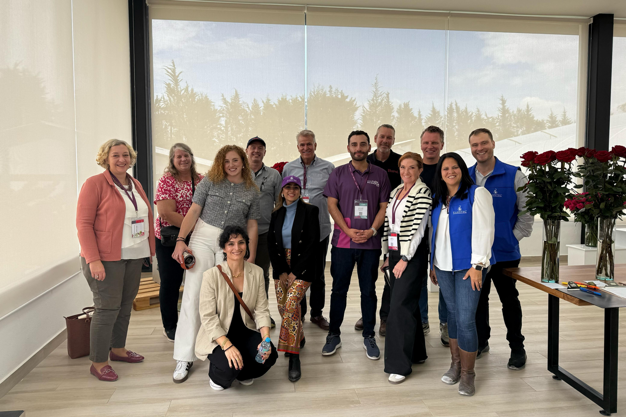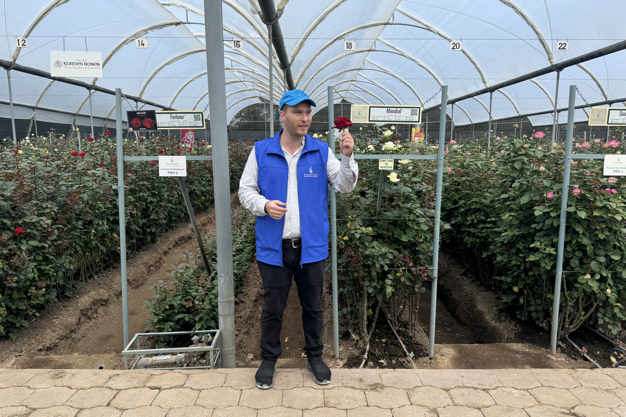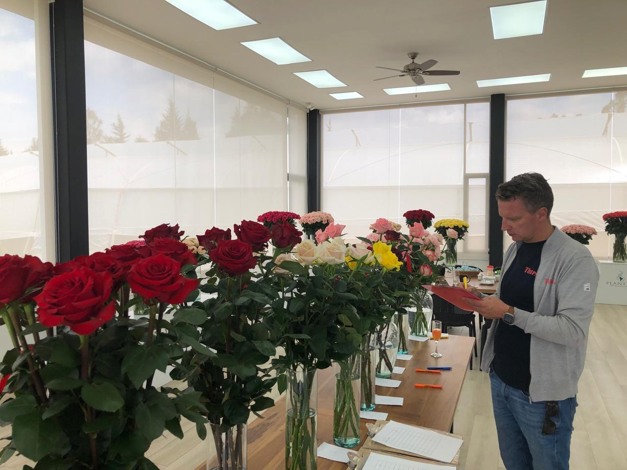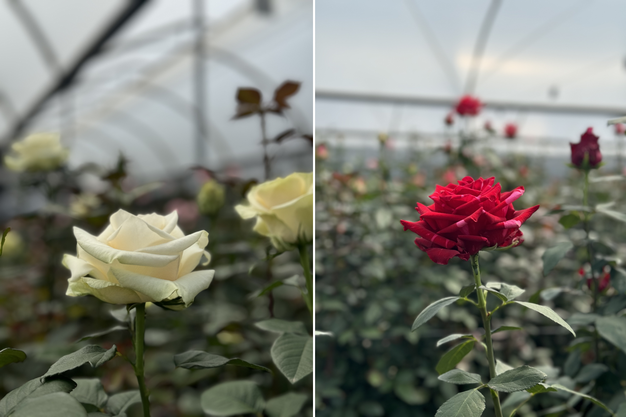Selecting and propagating rose varieties, Plantec Ecuador has been doing it for nearly three decades in Ecuador at their 20-ha farm in San José de Oyambarillo, Yaruquí. Nowadays, they represent five rose breeders and this allows them to offer a wide collection of varieties entering the market with new shapes and new colors every year. In addition to San José de Oyambarillo, Yaruquí, Plantec also has a show room and experimental area at Flores Verdes in Cayambe. Along with other VIP Visitors of Expo Flor Ecuador, FloralDaily.com had the opportunity to attend a guided tour by Aviram Krell and get an insight into Plantec's propagation and selection process.

The VIP visitors during the Plantec tour
Propagation
When propagating, it all starts with the clean material for the new varieties. The eyes from the varieties are grafted onto the rootstock in their propagation greenhouse. This installation is divided into different compartments where Plantec controls environmental factors such as light, humidity, CO2 and temperature. The recently grafted plants are placed in a sub-division of the greenhouse where high levels of humidity are maintained to protect the leaves from drying out.
From the graft to delivery of the plants takes approximately 7 weeks. During these weeks, the grafted bud and particularly the roots are developing. To get the optimal plant, great care during this period is essential. "All the sections in the greenhouse are equipped with special techniques to create the best atmosphere for plant development, but manual care is still necessary. We pinch the plants when the first buds begin to develop. Our goal is to direct all the plant's energy towards building up its vegetative foundation. The more experienced personnel take the time to select the plants by size and prepare those plants for delivery." One of the most important aspects in the propagation in Plantec is the hardening sub-division. In this last part of the production of the plants, Plantec makes certain that the plants become acclimatized to the conditions of the flower grower. "This is to ensure that the plants do not undergo any serious shock when planted in the rose grower's fields."
Selection
Another important task for Plantec is selecting the varieties from the five rose breeders they work with: German breeder Kordes Roses, Dutch breeder Interplant, French breeders George Delbard and Scea Rosaplants, and Australian breeder Grandiflora. Annually, Plantec receives more than 8,000 codes from their breeders and the selection process begins. Aviram explains that they start from the consumer's point of view. "After planting, the first step is to check the flower: We ask ourselves, 'is it nice?' "Is the color, shape , and size commercially viable?" Then, we check how it behaves in the vase: 'What is the vase life and how does it develop in the vase?'" Only then do they start to look at the production behavior of the plants. "The first two years, we try not to throw any varieties away. After the first two years we began to discard during every selection cycle, which means around 85-95% of the varieties are discarded in their first selection cycle. In the second cycle we maintain around 7% of the remaining varieties."
 Aviram Krell during the tour
Aviram Krell during the tour
The selection team in Plantec works around the clock every day to maintain accurate data on all of these varieties, which highlights that selecting varieties is a tough job. Besides the vase life test which is oriented towards the final consumer, Plantec looks for the traits important to the grower. The international guests present at the tour, also experienced the challenges of rose selection. After a typical Ecuadorian lunch with the famous ceviche dish, they had to judge the roses themselves. This wasn't an easy task, everyone had their preferences and opinions.
 The Ecuadorian lunch
The Ecuadorian lunch
 One of the VIPs judging the roses
One of the VIPs judging the roses
The selection depends on the biological behavior of the plant, including data on: productivity, stem length, flower size, resistance to diseases, etc. The process of selecting a new variety starting at the initial reception of codes from the breeders until commercial delivery is between 5-7 years. Even after a variety is introduced to the commercial market, Plantec continues to collect data on how the variety behaves in the PRO rootstocks. "We are seeing that our new varieties are consistently showing positive results as we take more data collections of the new rootstocks", says Krell

Some of the Plantec varieties
For more information:
Plantec
www.plantecuador.com
